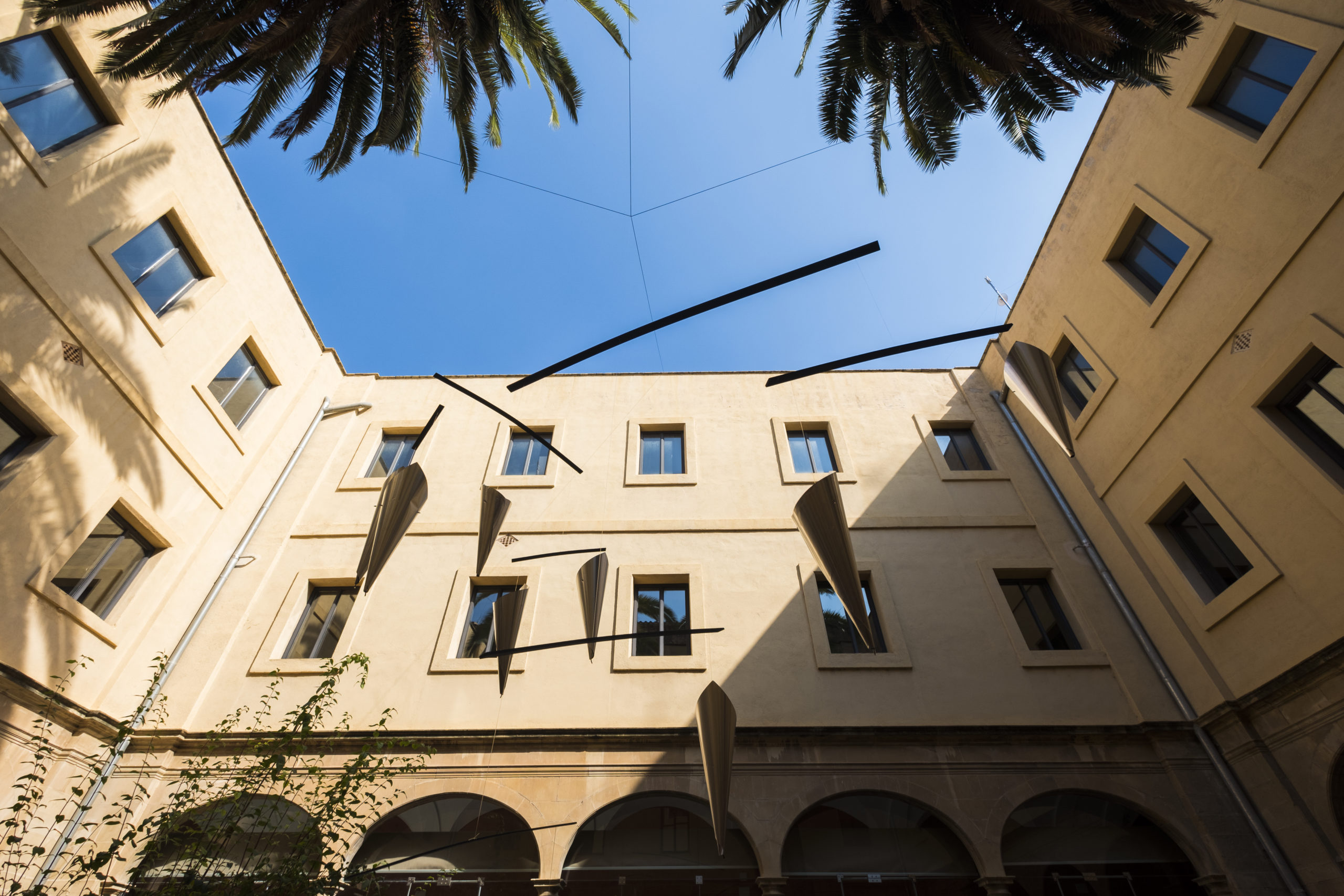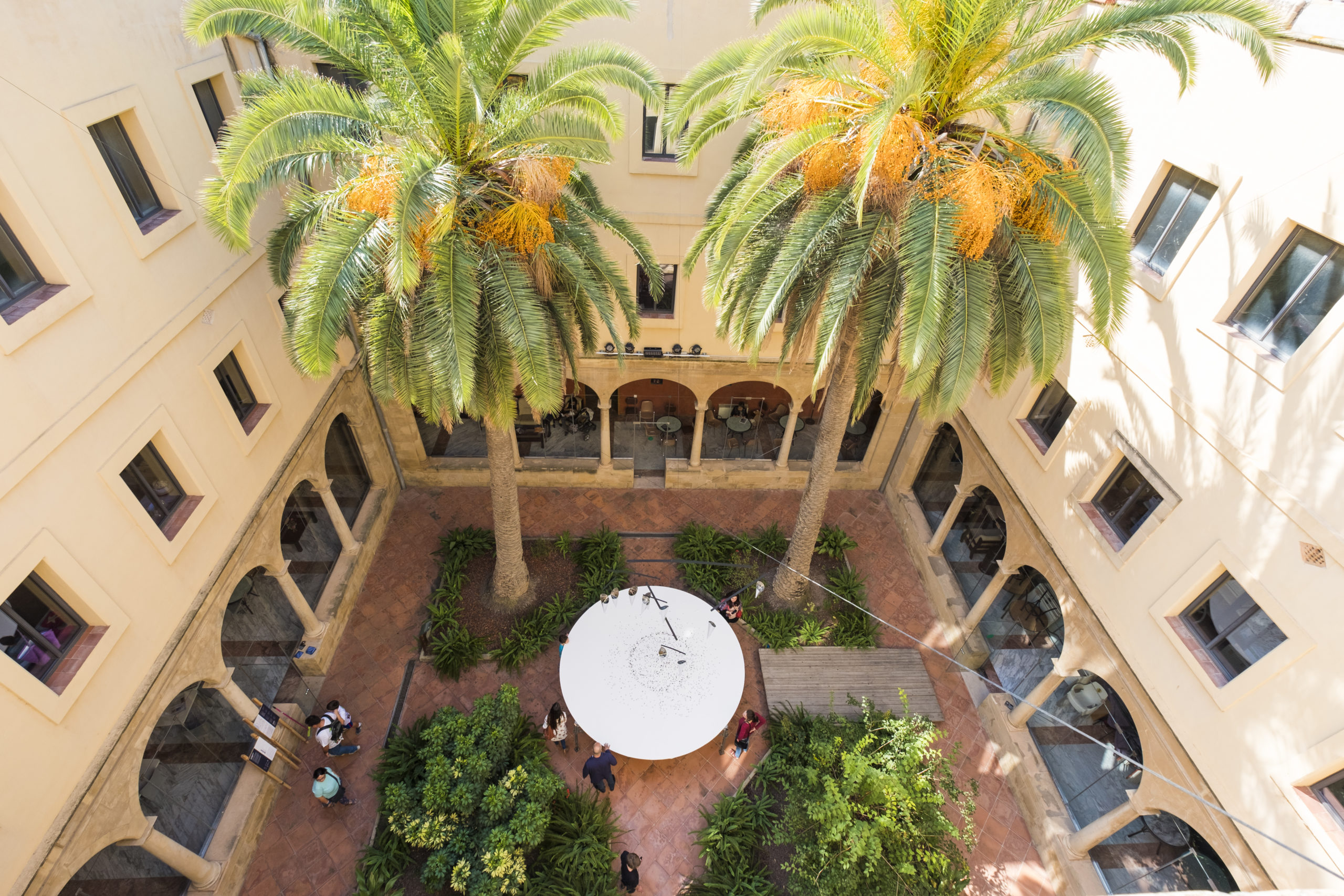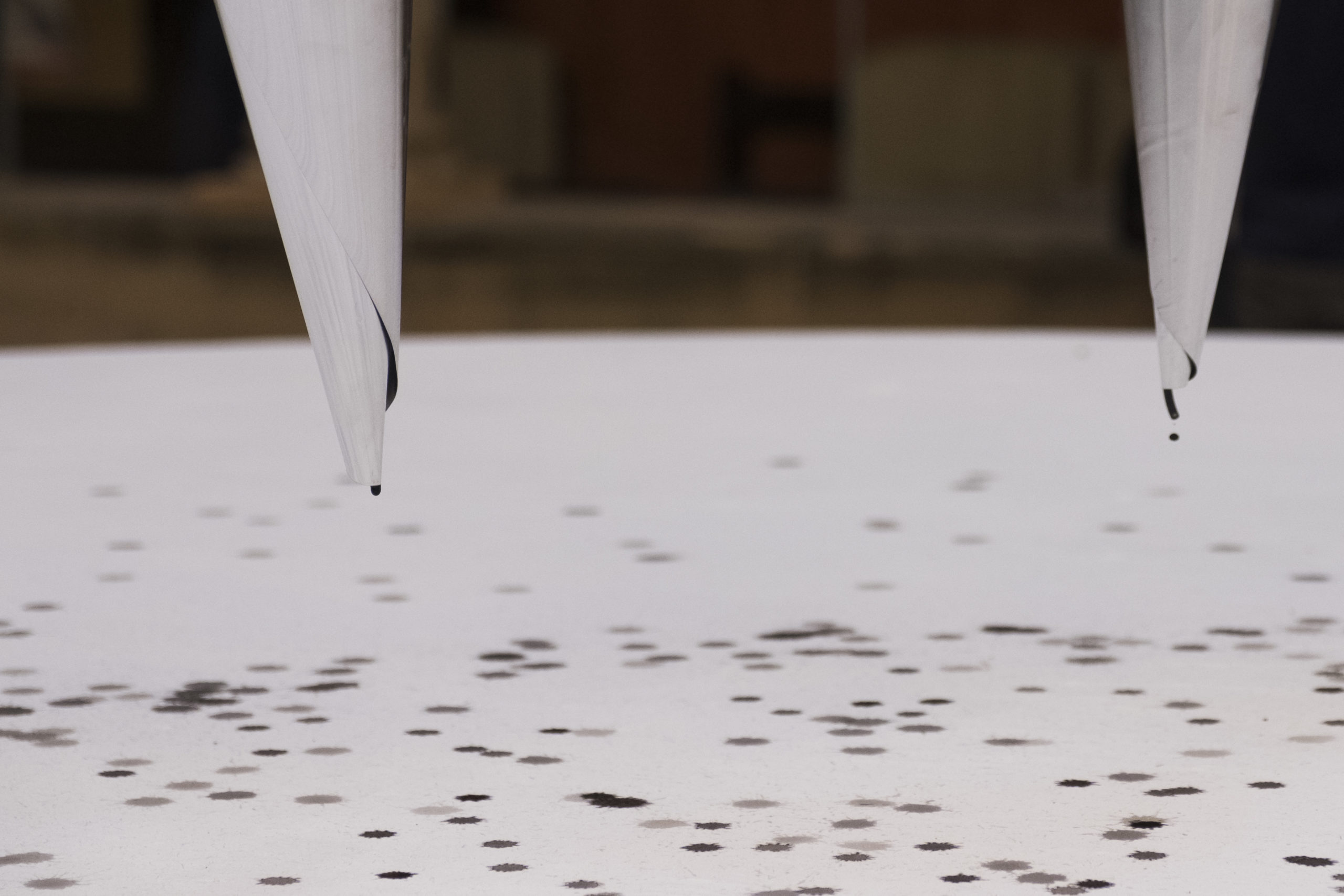Anemògraf
You need to know that an anemograph (English for “anemògraf”, title of the project) is an anemometer connected to a recorder in order to obtain a graphic representation of the evolution of the wind speed. The authors have created an ephemeral fountain pen for the wind; a mobile that moves thanks to wind currents provoked by the movements of visitors and by the weather.
This mobile is assembled by pieces of wood that have cones full of ink suspended from them. They move without restrictions and under the intrigued gaze of watchers they write, drop by drop, the movements captured from its surroundings by the anemograph.
According to the creators of the work, a mobile represents the end of a cycle and the start of a new one. It is an element that materialises movement, permanent transformation, instability and the challenge of the laws of gravity and equilibrium. The anemograph allows the wind to be expressed on a canvas, and the weather and movement to be materialised randomly and poetically on a new page. The result will be a surprise.
Léa Girault, Benjamin Joudrier, Chloé Morin and Etienne Gobin














THE AUTHORS
The work has been created by Léa Girault, Benjamin Joudrier, Chloé Morin and Etienne Gobin. It has been set up in the cloister of the Immaculada de Jesús by Léa and Benjamin.
Benjamin Joudrier from Paris and Léa Girault from Bordeaux studied at the National School of Architecture Paris Val de Seine. They have worked on projects of different types and of different scales, in well-known studios such as Jacques Ferrier Architecture, Ateliers Jean Nouvel and Ciguë.
Together they have created works in events like the Festival des Architectures Vives in Montpellier, with the aim of always presenting a solid, sensible proposal that will surprise. Working as a team allows them to go beyond the limits of their normal ways of thinking and to combine their qualities.
They have explained that being at A Cel Obert gives them the opportunity to put into practice a form of architecture that places the user or visitor at the centre, while provoking emotions in them; an architecture that triggers certain questions such as, for example, “Do I have to sit and contemplate this?”, “Can I touch it?”, “What will happen if I touch it?”, “But, how does this work?”, or that simply invites you to be surprised.
During their years at university Léa and Benjamin learnt and accepted the idea that “what is contemporary revalues our heritage”. Following this concept, they consider that Tortosa is a city with a history that becomes a showcase for modernity and experimentation during this festival.
